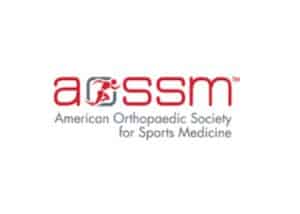
Authors:
Lucca Lacheta, MD, Alex Brady, MSc, Samuel I. Rosenberg, BA, Travis J. Dekker, MD, Ritesh Kashyap, MSc, Payam Zandiyeh, PhD, Grant J. Dornan, MS, Matthew T. Provencher, MD, CAPT, MC, USNR, Peter J. Millett, MD, MSc
Abstract:
Background:
Superior capsule reconstruction (SCR) has been shown to improve shoulder function and reduce pain in patients with isolated irreparable supraspinatus tendon tears. However, the effects of SCR on biomechanics in a shoulder with an extensive posterosuperior rotator cuff tear pattern remain unknown.
Purpose/Hypothesis:
The purpose was to (1) establish a dynamic robotic shoulder model, (2) assess the influence of rotator cuff tear patterns, and (3) assess the effects of SCR on superior humeral head translation after a posterosuperior rotator cuff tear. It was hypothesized that a posterosuperior rotator cuff tear would increase superior humeral head translation when compared with the intact and supraspinatus tendon–deficient state and that SCR would reduce superior humeral head translation in shoulders with massive rotator cuff tears involving the supraspinatus and infraspinatus tendons.
Study Design:
Controlled laboratory study.
Methods:
Twelve fresh-frozen cadaveric shoulders were tested using a robotic arm. Kinematic testing was performed in 4 conditions: (1) intact, (2) simulated irreparable supraspinatus tendon tear, (3) simulated irreparable supra- and infraspinatus tendon tear, and (4) SCR using a 3 mm–thick dermal allograft (DA). Kinematic testing consisted of static 40-N superior force tests at 0°, 30°, 60°, and 90° of abduction and dynamic flexion, abduction, and scaption motions. In each test, the superior translation of the humeral head was reported.
Results:
In static testing, SCR significantly reduced humeral superior translation compared with rotator cuff tear at all abduction angles. SCR restored the superior stability back to native at 60° and 90° of abduction, but the humeral head remained significantly and superiorly translated at neutral position and at 30° of abduction. The results of dynamic testing showed a significantly increased superior translation in the injured state at lower elevation angles, which diminished at higher elevation, becoming nonsignificant at elevation >75°. SCR reduced the magnitude of superior translation across all elevation angles, but translation remained significantly different from the intact state up to 60° of elevation.
Conclusion:
Massive posterosuperior rotator cuff tears increased superior glenohumeral translation when compared with the intact and supraspinatus tendon–insufficient rotator cuff states. SCR using a 3-mm DA partially restored the superior stability of the glenohumeral joint even in the presence of a simulated massive posterosuperior rotator cuff tear in a static and dynamic robotic shoulder model.
Clinical Relevance:
The biomechanical performance concerning glenohumeral stability after SCR in shoulders with large posterosuperior rotator cuff tears is unclear and may affect clinical outcomes in daily practice.
To request access to the study from AOSSM, click the link below: